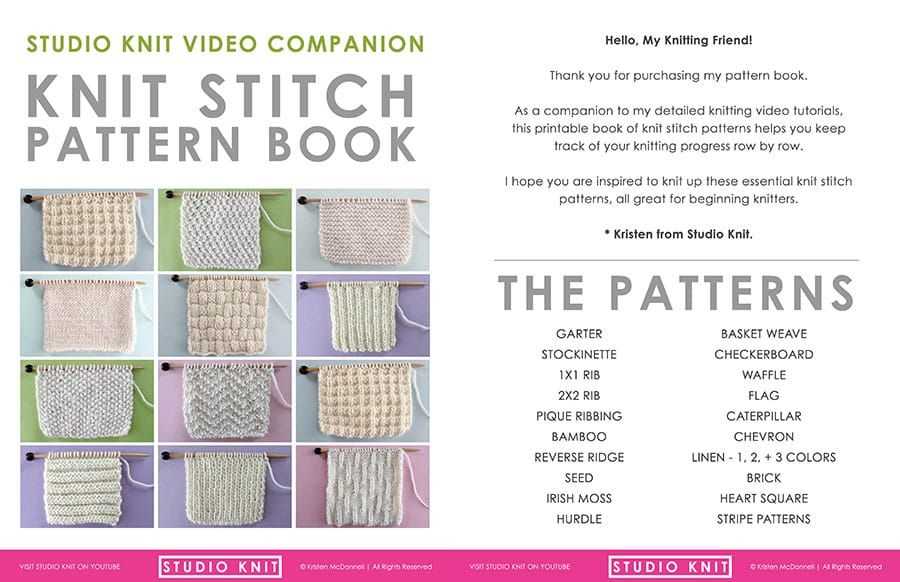
Learning to knit can be a fun and rewarding experience. Whether you’re looking to create cozy scarves, stylish sweaters, or adorable baby booties, mastering the basics of knitting is the first step to creating beautiful handmade pieces. For beginners, it’s important to start with simple knit patterns that are easy to follow and practice with.
One of the best patterns for beginners is the garter stitch scarf. This pattern involves knitting every stitch in every row, creating a uniform and textured fabric. The garter stitch is a great way to practice the basic knit stitch, and the resulting scarf can be a versatile addition to any wardrobe. With just a few skeins of yarn and a pair of knitting needles, beginners can create a cozy and stylish accessory in no time.
Another beginner-friendly pattern is the basic hat. This pattern involves knitting in the round, which may seem daunting at first, but with a little practice, it becomes second nature. Knitting a hat allows beginners to practice different techniques, such as ribbing for the brim and decreasing stitches for shaping the crown. The end result is a warm and cozy hat that can be customized with different yarns and colors.
For those looking to branch out from accessories, a simple baby blanket pattern is a great next step. This pattern typically involves repeating a simple stitch pattern across multiple rows and can be easily adjusted to create blankets of different sizes. Knitting a baby blanket allows beginners to practice their tension and create a beautiful and practical gift for a loved one.
With these beginner-friendly knit patterns, anyone can start their knitting journey and create beautiful handmade items. So grab your knitting needles and yarn, and get ready to dive into the world of knitting!
Knit Patterns for Beginners
Knitting is a popular craft that can be enjoyed by people of all ages and skill levels. If you are a beginner who is just starting out with knitting, it can be overwhelming to choose a pattern that is suitable for your skill level. However, there are many knit patterns available that are perfect for beginners.
Scarves: Scarves are a great project for beginners as they only require basic knitting stitches. You can start with a simple garter stitch scarf, which is made by knitting every row. As you gain confidence, you can try different stitch patterns like ribbing or seed stitch to add more variety to your scarves.
Hats: Knitting a hat is another beginner-friendly project that can be completed relatively quickly. There are many simple hat patterns available that use basic stitches like knit and purl. You can choose a pattern with a ribbed brim for added stretch and comfort.
Dishcloths: Dishcloths are small and quick projects that are perfect for practicing different stitch patterns. They are also very practical and make great gifts. You can choose a pattern that incorporates basic stitches like seed stitch or moss stitch to create texture.
Baby Blankets: Knitting a baby blanket is a larger project that may take more time, but it is still suitable for beginners. Choose a pattern that uses simple stitches like garter stitch or stockinette stitch. Baby blankets are a great way to practice your knitting skills while creating a beautiful and useful item.
Remember, patience and practice are key when learning to knit. Start with simple patterns and gradually challenge yourself with more complex projects. With time and dedication, you will become more skilled and confident in your knitting abilities.
Easy Knitting Projects for Beginners
If you are new to knitting, starting with simple projects is a great way to build confidence and learn new skills. Here are a few easy knitting projects that are perfect for beginners:
1. Scarf
A scarf is a classic knitting project that is perfect for beginners. You can choose a simple stitch pattern and experiment with different yarns to create a personalized accessory. Start with a basic garter stitch scarf using bulky yarn for faster results. As you gain more experience, you can try more complex patterns like ribbing or lace.
2. Dishcloth
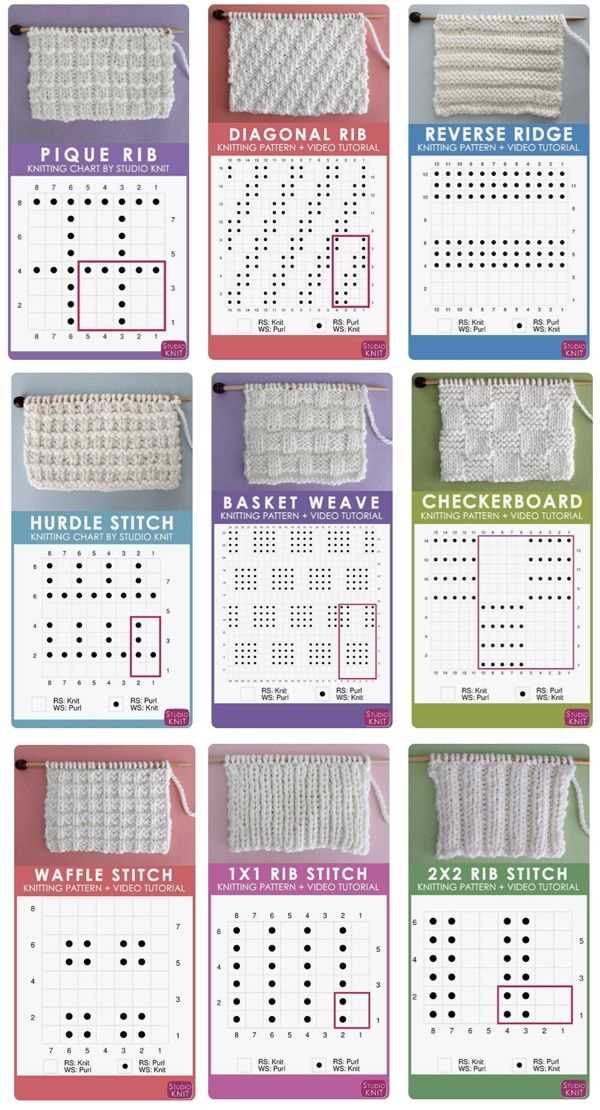
Knitting dishcloths is another easy and practical project for beginners. They are quick to make and can be used as a functional item in your kitchen. Start with a basic square shape and practice different stitch patterns to add texture. Cotton yarn is a great choice for dishcloths as it is absorbent and durable.
3. Hat
Knitting a hat is a great way to learn how to knit in the round. Choose a simple pattern with a ribbed brim and stockinette stitch for the body of the hat. You can experiment with different yarns and colors to create a unique accessory. Adding a pompom or a personalized embellishment can make your hat even more special.
4. Baby Blanket
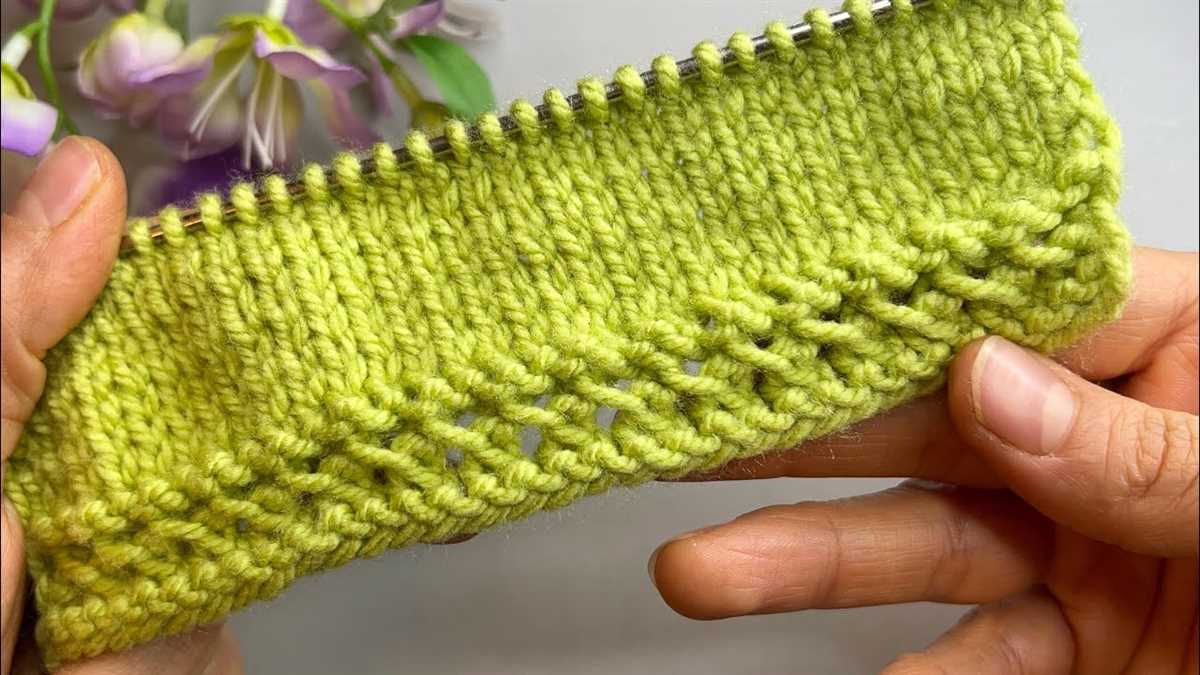
If you want to take on a slightly larger project, knitting a baby blanket is a great option. Start with a simple pattern using soft and washable yarn. You can choose a basic stitch pattern like garter stitch or try something more intricate like a basketweave or chevron pattern. Knitting a baby blanket allows you to practice your skills and create a beautiful and meaningful gift.
Remember, the key to successful knitting projects for beginners is to start with simple patterns and gradually challenge yourself as you gain more experience. Don’t be afraid to make mistakes and learn from them. Knitting is a relaxing and enjoyable hobby that allows you to create beautiful handmade items. Start with these easy projects and soon you’ll be ready to tackle more complex designs!
Knitting Supplies for Beginners
When starting your knitting journey, it’s important to have the right supplies to help you get started on your projects. Here are some essential knitting supplies for beginners:
1. Knitting Needles
Knitting needles are the most basic tool you’ll need for knitting. They come in various sizes and materials, such as bamboo, metal, or plastic. It’s recommended for beginners to start with medium-sized needles that are comfortable to hold.
2. Yarn
Yarn is the thread-like material used for knitting. There are different types of yarn, including cotton, wool, acrylic, and blends. For beginners, it’s best to start with a medium-weight yarn, as it is easier to handle and work with.
3. Scissors
Having a pair of scissors dedicated to your knitting projects is essential for cutting yarn and trimming ends. Choose a pair of small, sharp scissors that are comfortable to hold and easy to carry in your knitting bag.
4. Stitch Markers
Stitch markers are small, often colorful, rings or clips that help you mark specific stitches or sections in your knitting. They come in handy when following a pattern or keeping track of certain stitch patterns. Starting with a set of basic stitch markers will help you stay organized.
5. Tapestry Needle
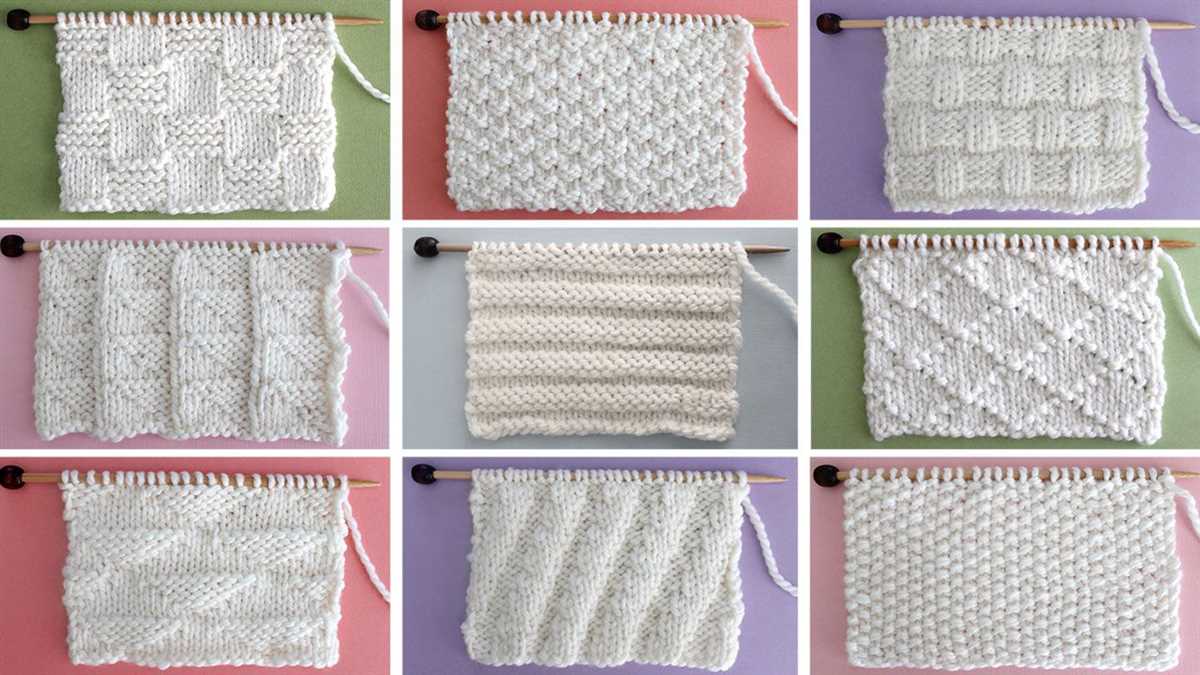
A tapestry needle, also known as a yarn needle or darning needle, is used to weave in loose ends of yarn or to seam knitted pieces together. Look for one with a large eye and a blunt tip to make it easier to thread the yarn.
6. Row Counter
A row counter is a small device or tool that helps you keep track of the number of rows or rounds you’ve knitted. It eliminates the need to manually count each row and prevents mistakes. There are both manual and digital row counters available.
Having these basic knitting supplies will give you a good starting point for your knitting projects. As you gain more experience, you can explore and add more specialized tools to your collection.
Step-by-Step Guide to Knitting Basics
Learning how to knit can be an exciting and rewarding experience. Whether you’re a complete beginner or have some basic knowledge, this step-by-step guide will help you master the knitting basics.
Gathering Supplies: The first step in knitting is to gather all the necessary supplies. You will need knitting needles, yarn, scissors, and a tapestry needle. Choose a yarn that is appropriate for beginners, such as medium weight yarn, and a pair of knitting needles that are comfortable to hold.
1. Casting On:
The first step in any knitting project is to cast on. Casting on creates the foundation row of stitches. There are various methods to cast on, but the long-tail cast-on is commonly used for beginners. To cast on, start by leaving a long tail of yarn, make a slipknot, and then slide it onto your knitting needle. Follow the specific instructions for the long-tail cast-on method, which involves creating loops with the yarn and the knitting needle.
2. Knit Stitch:
The knit stitch is the most basic stitch in knitting and is the foundation for many patterns. To knit a stitch, insert the right needle through the front loop of the first stitch on the left needle. Bring the working yarn over the right needle from back to front, and then pull the right needle through the loop, slipping the old stitch off the left needle. Repeat this process for each stitch on the left needle until you have completed a row.
3. Purl Stitch:
The purl stitch is another basic stitch in knitting and creates a different texture than the knit stitch. To purl a stitch, insert the right needle through the front loop of the first stitch on the left needle, but from right to left. Bring the working yarn under and over the right needle from back to front, and then pull the right needle through the loop, slipping the old stitch off the left needle. Repeat this process for each stitch on the left needle until you have completed a row.
4. Binding Off:
Once you have finished knitting your desired number of rows or completed a pattern, it’s time to bind off. Binding off creates a finished edge and secures the stitches in place. To bind off, knit the first two stitches, then insert the left needle into the first stitch on the right needle and lift it up and over the second stitch, letting it slip off the right needle. Knit the next stitch, and repeat the process until you have one stitch remaining. Cut the yarn, leaving a long tail, and then pull it through the last stitch to secure it.
With these basic knitting techniques, you’ll be well on your way to creating beautiful knitted projects. Practice these steps until you feel comfortable with the knitting basics, then you can start exploring more advanced patterns and techniques.
Essential Knitting Techniques for Beginners
When starting out with knitting, it’s important to grasp a few essential techniques that form the foundation for more intricate projects. These techniques will help you create beautiful and polished knitted items, whether you’re making a cozy scarf or a stylish sweater.
1. Casting On: The first step in any knitting project is casting on, which involves creating the initial row of stitches on your knitting needle. There are various methods to cast on, such as the long-tail cast on or the knit cast on. This technique sets the stage for your knitting project, so it’s important to learn a method that works best for you.
The Basic Stitches
2. Knit Stitch: The knit stitch is the most fundamental stitch in knitting. It creates a smooth, flat fabric and is used to create the majority of knitted items. To knit, insert the needle through the stitch from left to right, wrap the yarn around the needle, and pull it through, slipping the old stitch off the needle.
3. Purl Stitch: The purl stitch is the counterpart to the knit stitch and creates a bumpy texture. It is often used in combination with the knit stitch to create interesting patterns. To purl, insert the needle from right to left, wrap the yarn around the needle, pull it through, and slip the old stitch off.
Increase and Decrease Techniques
4. Increase: Increasing involves adding stitches to your work, allowing it to become wider or more curved. The most common increase technique is the knit front and back (kfb), where you knit into the front and back of the same stitch to create two stitches from one.
5. Decrease: Decreasing involves removing stitches from your work, either to shape the fabric or create patterns. One popular decrease method is the knit two stitches together (k2tog), where you knit two stitches together as one, creating a decrease in stitch count.
Finishing Techniques
6. Binding Off: When you’re finished knitting your project, it’s important to bind off to secure the stitches and create a neat edge. The basic bind off method involves knitting two stitches, then passing the first stitch over the second stitch and off the needle. Repeat until one stitch remains, and then cut the yarn and pull it through the loop.
7. Weaving in Ends: To complete your knitted item, you will often have loose ends of yarn that need to be secured. Use a tapestry needle to weave these ends into the fabric, ensuring they are hidden and won’t unravel over time.
By familiarizing yourself with these essential knitting techniques, you’ll be well on your way to creating beautiful and functional knitted items. As you gain confidence and experience, you can explore more advanced techniques and tackle more intricate patterns.
Choosing the Right Yarn for Beginner Knitters
When it comes to knitting, choosing the right yarn is crucial, especially for beginners. The type of yarn you choose can greatly affect the success and enjoyment of your knitting project. Here are some things to consider when selecting yarn for your first knitting project:
Fiber Content
The fiber content of the yarn is an important factor to consider. Different fibers have different properties and will behave differently when knitted. For beginners, it is recommended to start with yarn that is easy to work with, such as acrylic or cotton. These fibers are usually soft, durable, and come in a wide range of colors.
Yarn Weight
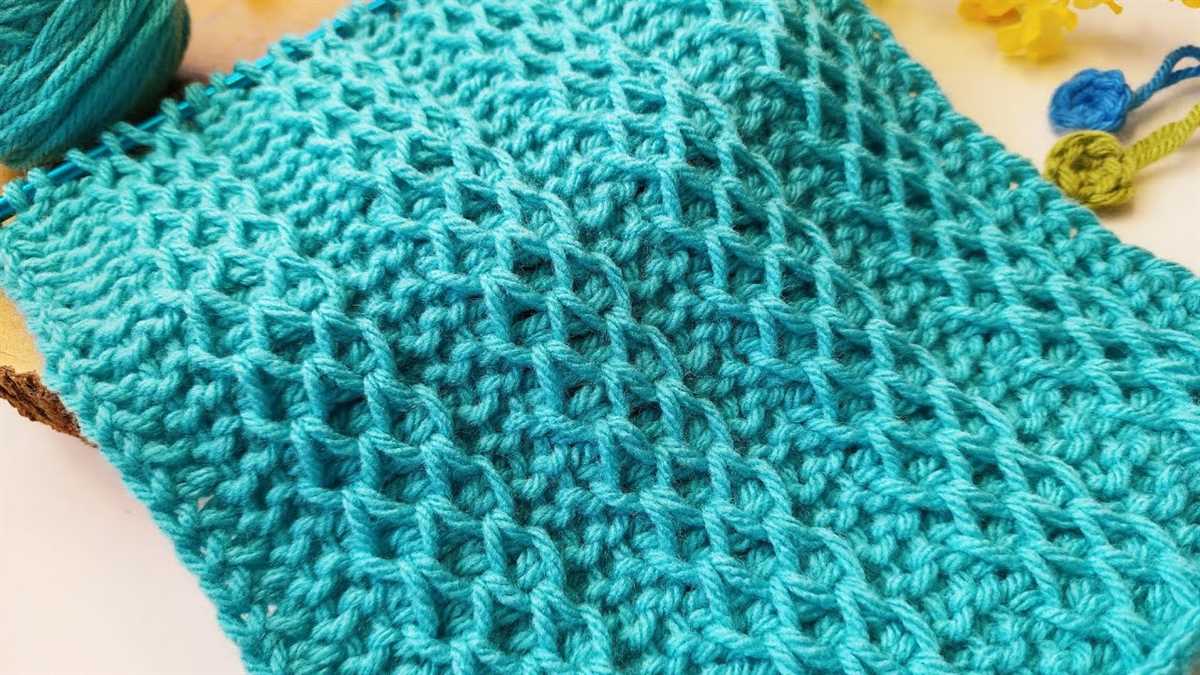
Another important aspect to consider is the weight of the yarn. Yarn weight refers to how thick or thin the yarn is. Beginners should look for yarn in the medium to bulky weight category as it is easier to handle and allows for quicker progress. Worsted weight yarn is a popular choice for beginner projects as it is versatile and widely available.
Texture and Ply
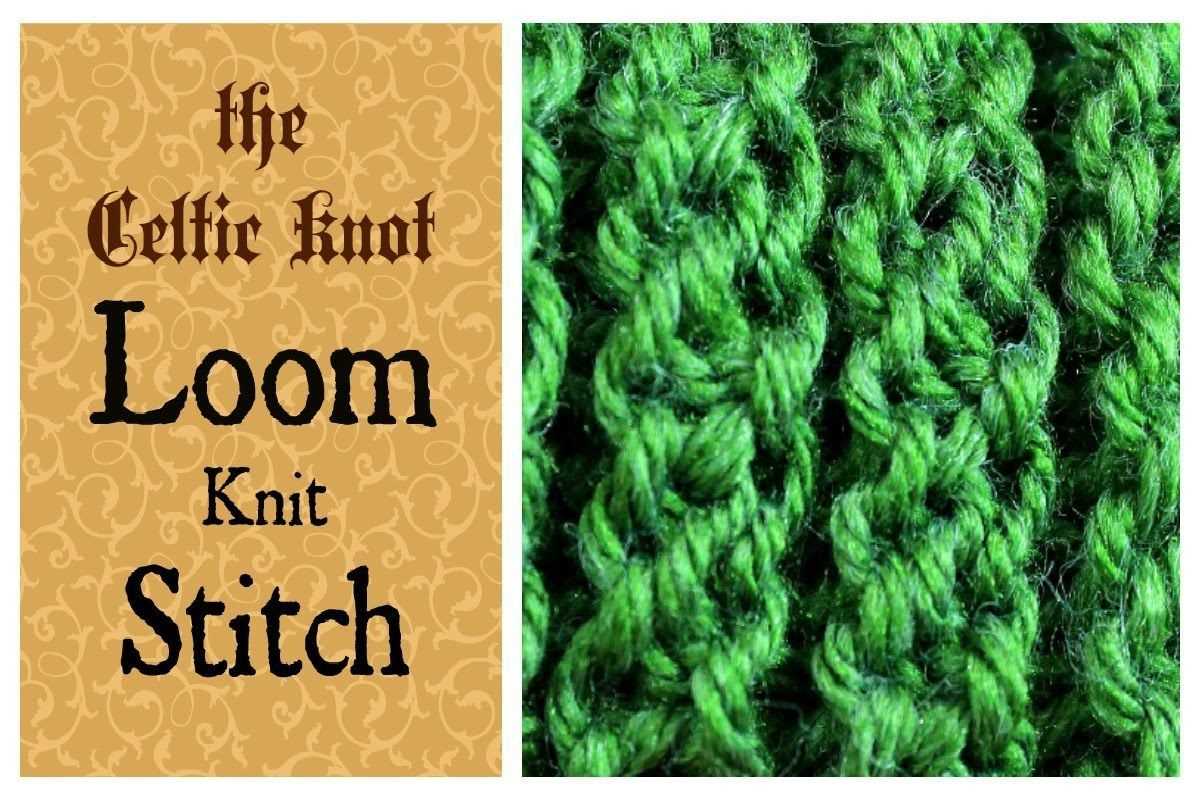
Texture and ply refer to the structure of the yarn. Choosing a smoother yarn with fewer bumps and twists can make it easier for beginners to see their stitches and work with the yarn. Single-ply yarns or yarns with a slight twist are good options for beginners as they are less likely to split or snag while knitting.
Color and Pattern
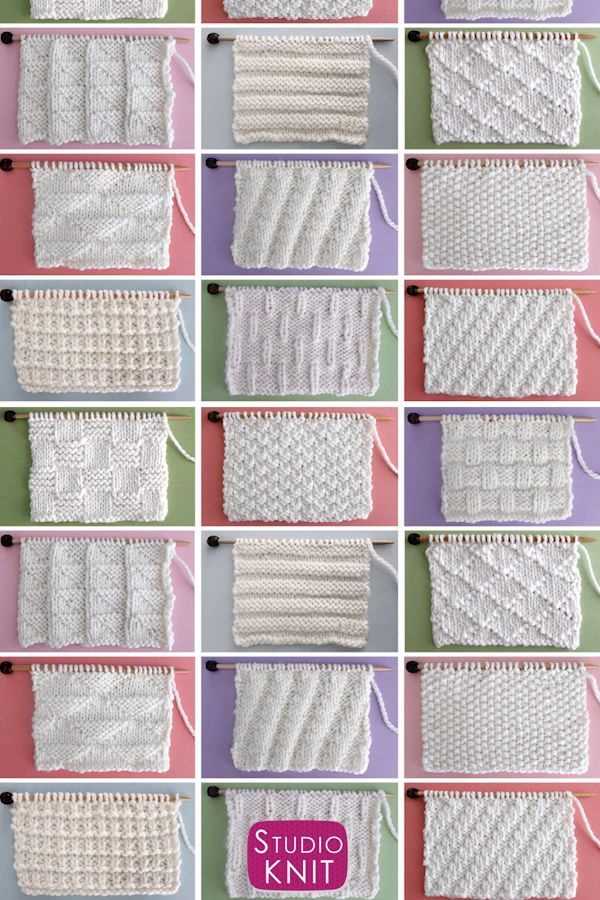
Lastly, consider the color and pattern of the yarn. Bright, solid colors or yarn with simple, repetitive patterns can be easier for beginners to work with as they make it easier to see and count stitches. Avoid highly variegated or multicolored yarns as they can make it more difficult to see the stitches and correct mistakes.
By considering these factors when choosing yarn for your first knitting project, you can set yourself up for success and create a beautiful and enjoyable knitting experience. Remember, practice makes perfect, so don’t be afraid to experiment and try different yarns as you continue to develop your knitting skills!
Basic Knit Stitch Patterns for Beginners
When you’re just starting out with knitting, it’s important to master the basic knit stitch. Once you feel comfortable with this fundamental stitch, you can create a variety of beautiful and interesting patterns. Here are some basic knit stitch patterns that beginners can try:
1. Garter Stitch
The garter stitch is the most basic of all knit stitches, and it’s perfect for beginners. It’s created by simply knitting every row. The result is a fabric with ridges on both sides. This stitch pattern is versatile and can be used for a wide range of projects, such as scarves, blankets, and dishcloths.
2. Stockinette Stitch
The stockinette stitch is another basic stitch pattern that beginner knitters should learn. It’s created by alternating a row of knit stitches with a row of purl stitches. The result is a smooth and flat fabric with a “V” pattern on one side and horizontal ridges on the other. This stitch pattern is commonly used for sweaters, hats, and socks.
3. Seed Stitch
The seed stitch is a simple but visually interesting stitch pattern that beginners can try. It’s created by alternating knit and purl stitches within the same row. This creates a fabric with small, raised bumps or “seeds” on both sides. The seed stitch is great for adding texture to scarves, baby blankets, and washcloths.
4. Ribbing
Ribbing is a common stitch pattern used for cuffs, hems, and borders. It creates a stretchy and elastic fabric. Ribbing is achieved by alternating knit and purl stitches in the same row, usually in a 1×1 or 2×2 pattern. This stitch pattern adds a decorative element to your knitting projects while also providing a snug fit.
5. Basketweave Stitch
The basketweave stitch is a bit more advanced than the previous patterns, but it’s still suitable for beginners who want to try something a little more challenging. It creates a textured fabric that resembles a woven basket. The basketweave stitch involves alternating blocks of knit and purl stitches, usually in a 4×4 or 6×6 pattern. This stitch pattern is perfect for scarves, blankets, and pillows.
With these basic knit stitch patterns in your repertoire, you’ll be able to create a wide range of projects and build your knitting skills. Remember to practice and experiment with different yarns and needle sizes to create unique and beautiful knitted items.
Simple Knit Accessories for Beginners
If you’re new to knitting and looking for some simple projects to start with, accessories are a great place to begin. These small and quick projects allow you to practice different stitches and techniques while creating useful and stylish items. Here are a few simple knit accessories that are perfect for beginners:
1. Scarves
A scarf is a classic knitting project that is perfect for beginners. It’s a simple rectangular shape that allows you to practice basic knit and purl stitches. You can choose from a variety of yarns and colors to create a scarf that matches your style. Once you’ve mastered the basics, you can even experiment with different stitch patterns to add some texture to your scarf.
2. Headbands
Headbands are another great accessory for beginners. They are small and quick to knit, making them perfect for practicing new techniques. You can create a simple garter stitch headband or experiment with different stitch patterns for a more intricate design. Headbands are not only stylish but also practical, keeping your hair out of your face while adding a touch of handmade charm.
3. Fingerless Gloves
Fingerless gloves are a great project for beginners who want to take their knitting skills to the next level. They are a bit more advanced than scarves or headbands but still manageable for beginners. Fingerless gloves allow you to practice knitting in the round and shaping the thumb opening. They are not only fashionable but also practical, keeping your hands warm while allowing you to use your fingers freely.
4. Dishcloths
If you’re looking for a practical and useful project, dishcloths are a great option. They are small and quick to knit, making them perfect for beginners. Dishcloths are also great for practicing different stitch patterns and techniques, such as increases and decreases. Plus, they make great gifts for friends and family.
These simple knit accessories are great projects for beginners. They allow you to practice different stitches and techniques while creating useful and stylish items. With a little practice, you’ll be able to master these projects and move on to more advanced knitting projects in no time.
Knitting Tips and Tricks for Beginners
If you are new to knitting, it can be helpful to have some tips and tricks to guide you as you begin your knitting journey. Here are some useful tips to keep in mind:
1. Start with simple patterns
When you are just starting out, it is best to begin with simple knitting patterns. Look for patterns that use basic stitches and have minimal shaping. Starting simple will help you build confidence and develop your knitting skills.
2. Choose the right yarn and needles
Choosing the right yarn and needles for your project is important. As a beginner, it is best to start with a medium-weight yarn and a pair of medium-sized needles. This combination will be easier to work with and allow you to see your stitches clearly.
3. Practice tension control
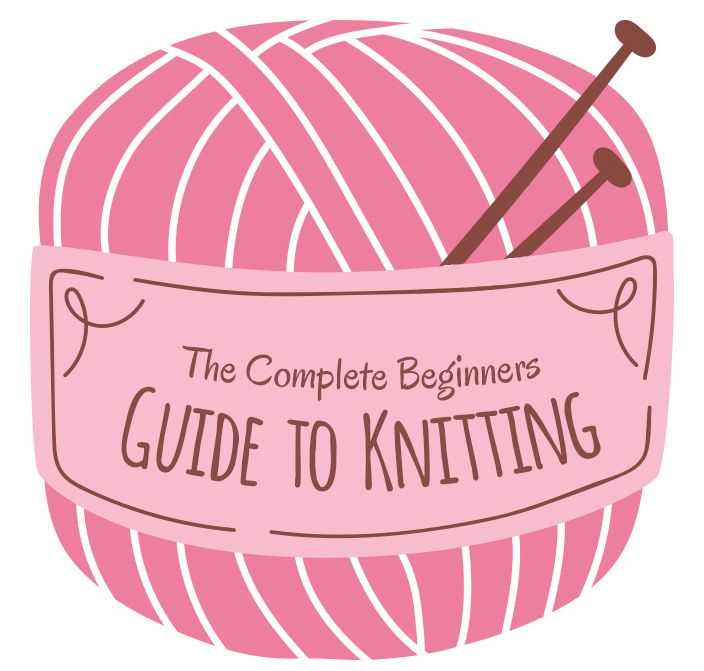
Tension control is one of the keys to successful knitting. It is important to practice maintaining an even tension in your knitting. This can be achieved by consistently wrapping the yarn around your fingers in the same way and not pulling too tightly or too loosely.
4. Use stitch markers
Stitch markers can be a helpful tool when working on more complex patterns. They can help you keep track of your stitches and prevent mistakes. Place a stitch marker on your needle to mark a specific stitch or section of your knitting.
5. Take breaks and stretch
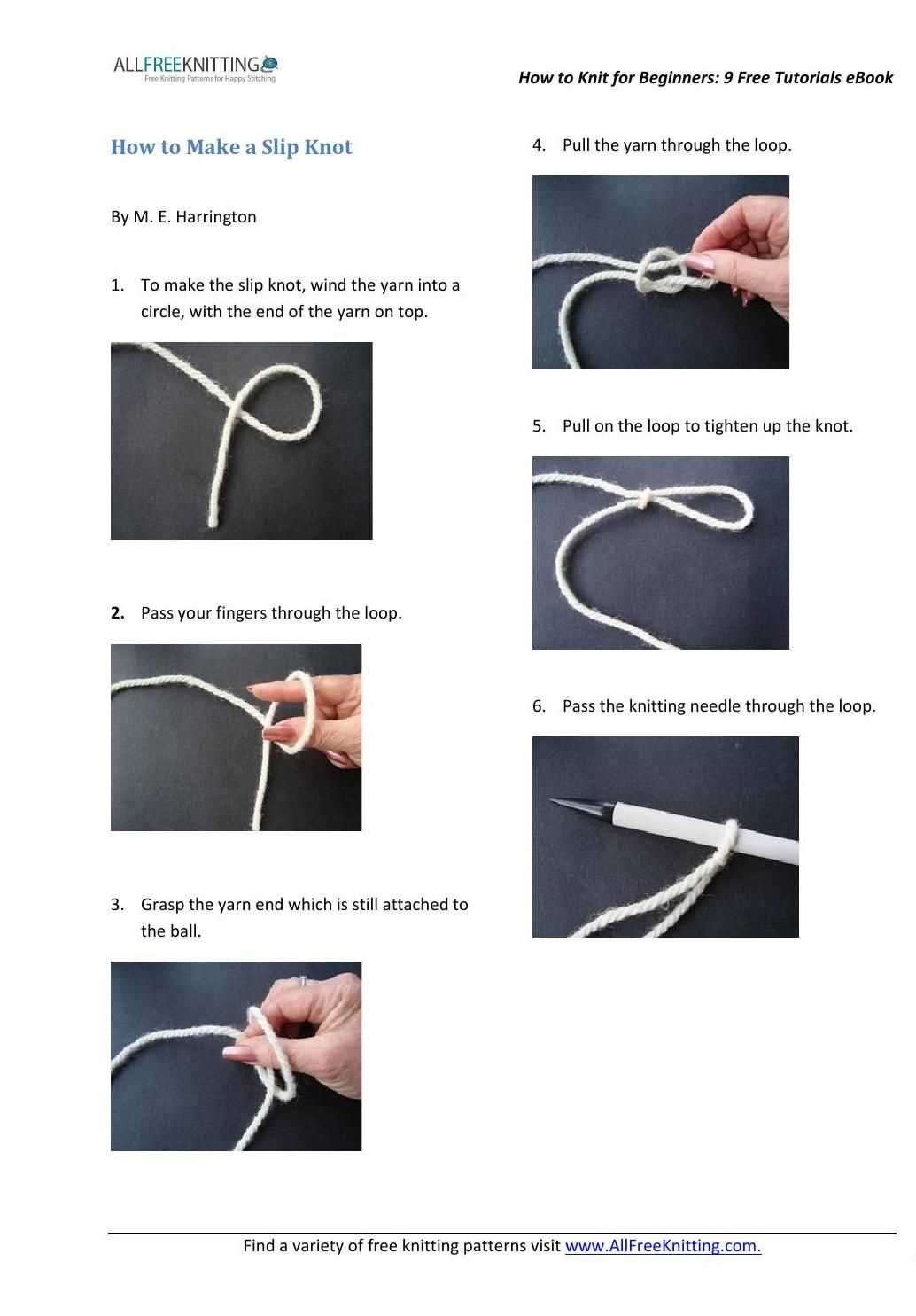
Knitting can be a repetitive motion that can cause strain on your hands and wrists. Remember to take breaks and stretch your hands and wrists regularly to prevent discomfort or injury. Being mindful of your body can help ensure that knitting remains an enjoyable and relaxing activity.
By following these tips and tricks, you will be well on your way to becoming a confident and skilled knitter. Remember that practice makes perfect, so don’t be discouraged if you make mistakes along the way. Enjoy the process and have fun exploring the world of knitting!
Knitting Projects for Kids
Knitting can be a fun and rewarding hobby for kids to learn. It teaches them patience, creativity, and problem-solving skills. Plus, they get to create their own unique and cozy accessories. Here are some knitting projects that are perfect for beginners:
1. Simple Scarf: A scarf is a great first project for kids to learn how to knit. They can start with a basic garter stitch, which involves knitting every row. They can choose their favorite color of yarn and create a scarf that reflects their personal style.
2. Cozy Hat: Once kids have mastered the garter stitch, they can move on to knitting a hat. They can use a circular knitting needle to create a seamless hat, or they can use straight needles and seam it together at the end. It’s a great way to practice different knitting techniques like ribbing and decreasing.
3. Cute Animal Toy: Knitting doesn’t have to be limited to accessories. Kids can also use their knitting skills to create adorable stuffed animal toys. There are many patterns available for cute animals like bears, bunnies, and owls. They can experiment with different yarn colors and textures to make their toy even more unique.
4. Fingerless Gloves: Fingerless gloves are another fun project for kids to try. They can learn how to create a ribbed cuff and practice knitting in the round to create the hand portion of the gloves. Fingerless gloves are practical and stylish, making them a great project for kids to show off their knitting skills.
5. Mini Purse: Kids can take their knitting skills to the next level by creating their own mini purse. They can learn how to knit a simple rectangle and then sew it together to form a bag shape. They can add a button or a zipper for closure, and even embellish it with beads or embroidery to make it truly unique.
These knitting projects for kids are a great way to introduce them to the world of knitting. They can start with simple projects and gradually move on to more complex ones as they gain confidence and skills. Knitting can be a lifelong hobby that brings joy and a sense of accomplishment, so encourage your kids to give it a try!
Knitting Tools and Equipment for Beginners
When you first start learning how to knit, it’s important to have the right tools and equipment to make the process easier and more enjoyable. Here are some essential items that every beginner knitter should have:
Knitting Needles:
The most important tool you’ll need for knitting is a pair of knitting needles. There are many different types of knitting needles to choose from, but for beginners, it’s best to start with a pair of straight, medium-sized needles. These needles are easy to handle and will work well for most projects.
- Size: The size of your needles will depend on the type of yarn you’re using and the stitch pattern you’re following. As a beginner, it’s recommended to start with a medium-sized needle, around US size 8 (5 mm).
- Material: Knitting needles can be made from various materials, such as bamboo, aluminum, or plastic. Bamboo needles are a popular choice for beginners because they are lightweight, smooth, and offer good grip.
Yarn:
Another essential for knitting is yarn. Yarn comes in different weights and fibers, so it’s important to choose the right type for your project. As a beginner, it’s recommended to start with a medium-weight yarn, also known as worsted weight yarn. This type of yarn is easy to work with and great for practicing different stitch patterns.
- Weight: Yarn weight is categorized using a numbering system from 0 to 7, with 0 being the finest yarn and 7 being the thickest. Worsted weight yarn is usually categorized as a 4, making it a versatile choice for many projects.
- Fiber: Yarn can be made from various fibers, including wool, acrylic, cotton, and blends. Acrylic yarn is a good option for beginners as it is affordable, easy to care for, and comes in a wide range of colors.
Tapestry Needle:
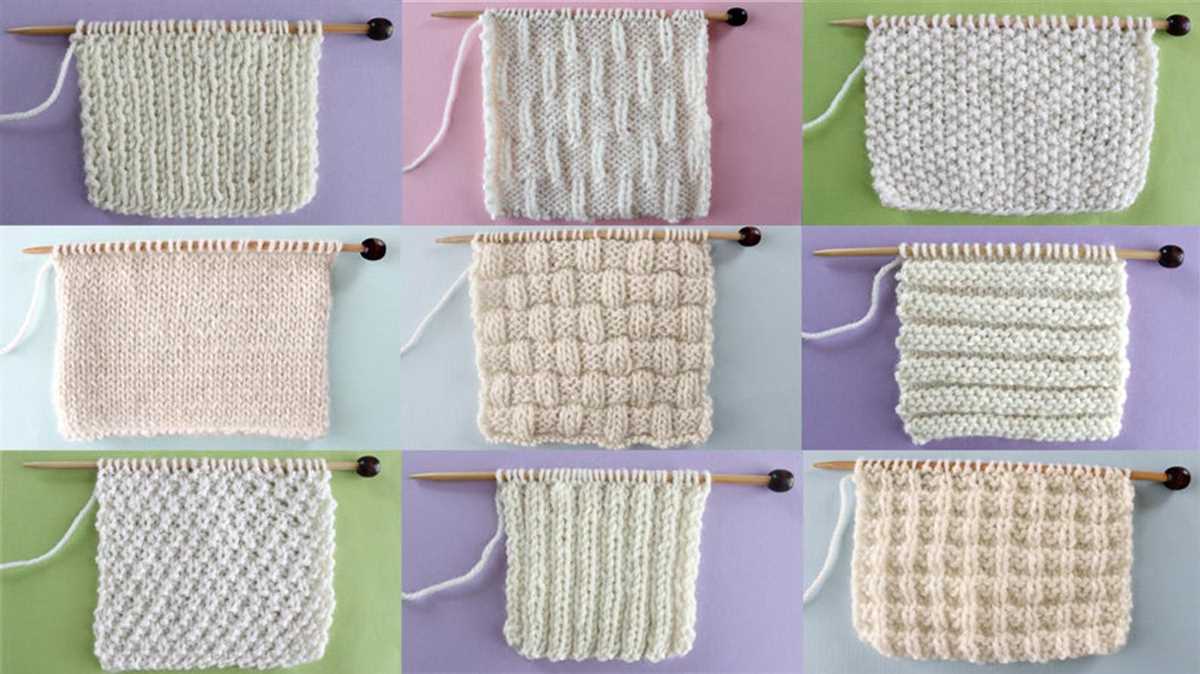
A tapestry needle, also known as a yarn needle or darning needle, is an essential tool for finishing your knitting projects. It’s used to weave in loose ends and sew together pieces of your project. Make sure to choose a tapestry needle with a large eye that will accommodate your yarn.
Scissors:
A pair of sharp scissors is essential for cutting your yarn when needed. Choose a small pair of scissors that are comfortable to hold and have a sharp tip for precise cutting.
Measuring Tape:
A measuring tape is handy for checking your gauge and taking measurements for sizing. Look for a flexible measuring tape that is at least 60 inches (150 cm) long.
Having these essential knitting tools and equipment will set you up for success as a beginner knitter. With the right tools in hand, you’ll be ready to start your knitting journey and create beautiful handmade items.
Common Mistakes to Avoid for Beginner Knitters
Knitting is a wonderful craft that allows you to create beautiful and cozy items, but it can be daunting for beginners. Here are some common mistakes to avoid if you are just starting out:
1. Choosing the Wrong Yarn
One of the most common mistakes beginner knitters make is choosing the wrong yarn for their project. It is important to pay attention to the yarn weight and fiber content specified in the pattern. Using the wrong yarn can result in a project that is too small, too large, or not as soft as desired.
2. Incorrect Gauge
Gauge refers to the number of stitches and rows per inch in your knitting. It is crucial to match the gauge specified in the pattern to ensure that your finished item will have the correct measurements. Beginners often neglect to check their gauge, resulting in ill-fitting garments or accessories.
3. Tension Problems
Consistent tension is essential for creating professional-looking knitted items. Beginners often struggle with maintaining an even tension, resulting in uneven stitches and an overall messy appearance. Practice knitting with a relaxed grip and take breaks if you find yourself gripping the needles too tightly.
4. Not Counting Stitches
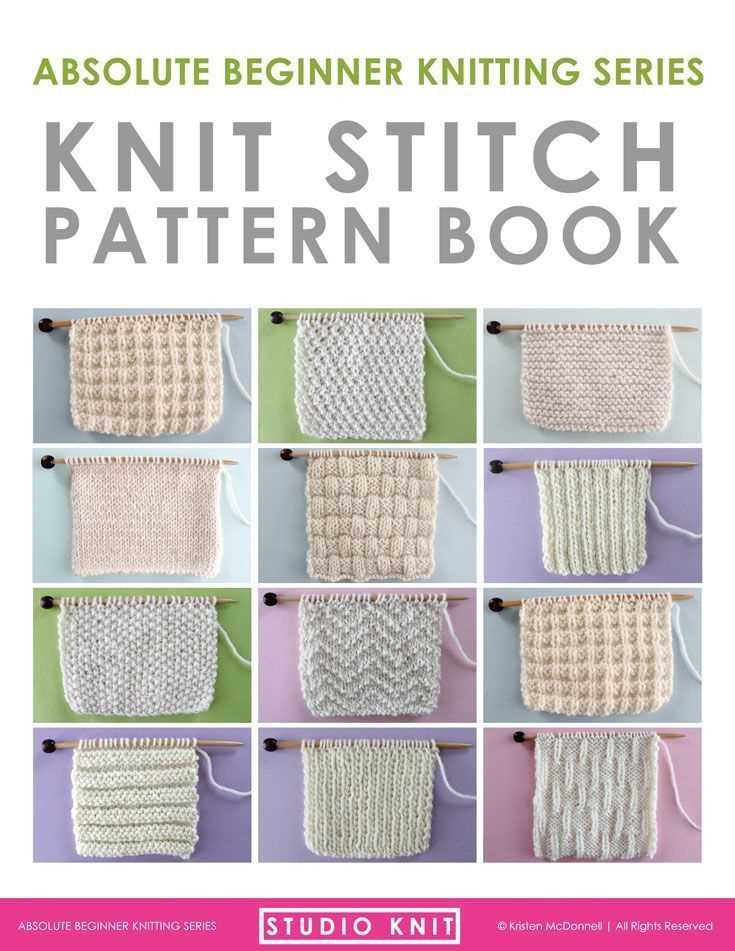
Counting stitches is a fundamental skill in knitting. Failing to count stitches can lead to missing or adding stitches, throwing off the entire pattern. Take the time to count your stitches regularly to ensure that you are staying on track.
5. Skipping Mistake Corrections
It is common to make mistakes while knitting, even for experienced knitters. However, beginners often overlook these mistakes and continue knitting without fixing them. This can result in irregularities in the finished project. Take the time to learn how to fix common mistakes, such as dropped stitches or incorrect decreases.
Avoiding these common mistakes will help beginners have a more successful knitting journey and produce beautiful, high-quality hand-knit items. Remember to take your time, practice regularly, and seek help or guidance when needed. Happy knitting!
Inspiration for Your Next Knitting Project
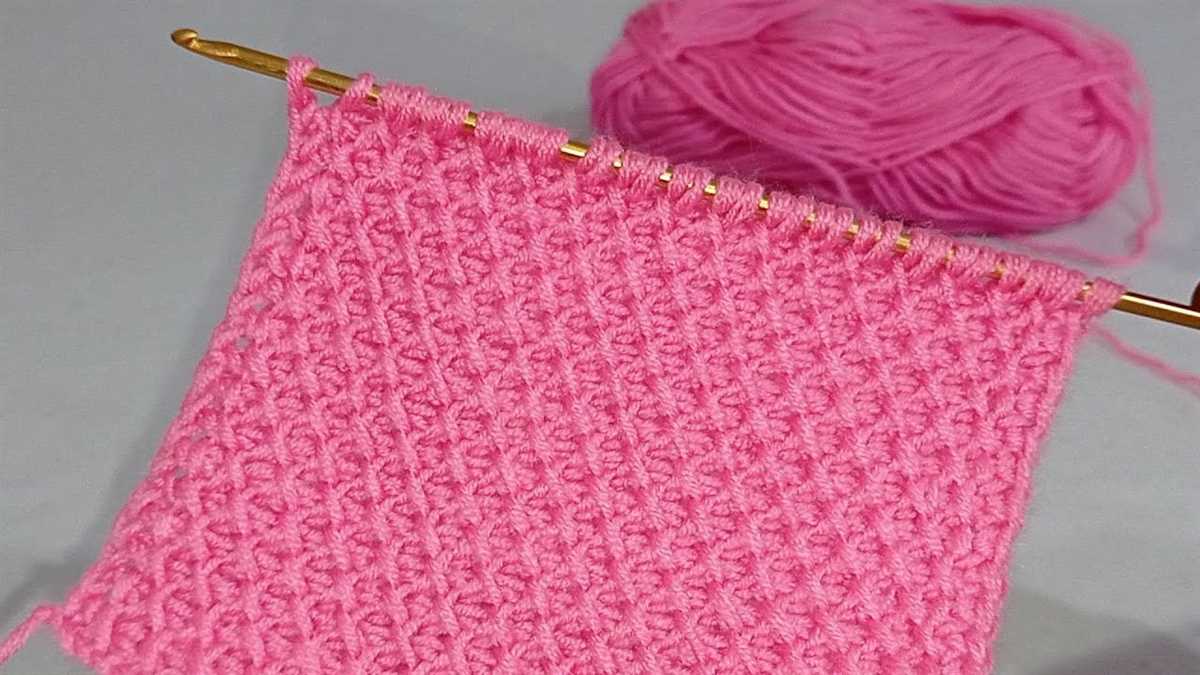
If you’re a beginner knitter looking for your next project, the possibilities are endless! Knitting offers a wide range of patterns and techniques to explore, whether you want to make a cozy sweater, a cute hat, or a stylish scarf. We’ve gathered some ideas to inspire you and help you choose your next knitting project.
1. Simple Scarves:
Scarves are perfect for beginners as they are relatively quick to knit and a great way to practice basic stitches. You can choose from various patterns, such as garter stitch or ribbing, and experiment with different colors and textures. Scarves make excellent gifts and are always in style.
2. Baby Blankets:
If you’re knitting for a little one, a baby blanket is a wonderful project. It allows you to practice more advanced techniques like lace or colorwork while creating a beautiful and practical item. You can choose soft pastel colors or mix it up with vibrant hues to create a unique and personalized blanket.
3. Chunky Hats:
Hats are another great project for beginners. You can start with a simple beanie or try your hand at more intricate patterns. Chunky hats are particularly trendy and perfect for keeping warm in the colder months. Experiment with different yarns and colors to create a hat that reflects your personal style.
4. Cozy Socks:
Socks may seem challenging, but they are actually a fun and rewarding project. You can start with basic patterns using thicker yarns, and as you gain confidence, you can move on to more intricate designs and thinner yarns. Hand-knit socks are not only comfortable but also make thoughtful gifts for loved ones.
5. Sweaters and Cardigans:
Once you’ve gained some experience, you can take on the challenge of knitting a sweater or cardigan. There are countless patterns available, from simple and classic designs to more detailed and stylish options. Choose a pattern that matches your skill level and dive into the world of sweater knitting.
Conclusion:
With these ideas and inspiration, you’re ready to embark on your next knitting project. Remember to choose a pattern that matches your skill level and interests, and don’t be afraid to experiment with different yarns and colors. Happy knitting!
Q&A:
What are some easy knit patterns for beginners?
Some easy knit patterns for beginners include scarves, hats, dishcloths, and simple baby blankets.
Where can I find beginner-friendly knit patterns?
You can find beginner-friendly knit patterns online on websites such as Ravelry, Knitting for Beginners, and LoveKnitting. You can also find patterns in knitting books and magazines.
What are some basic stitches to learn for knitting?
Some basic stitches to learn for knitting are the knit stitch, purl stitch, and stockinette stitch. These stitches are the foundation of many knitting patterns.
How do you read a knitting pattern?
To read a knitting pattern, you start by understanding the abbreviations and symbols used. Then, you follow the instructions row by row, stitch by stitch, until you complete the pattern.
What materials do I need to start knitting?
To start knitting, you will need knitting needles, yarn, a pair of scissors, and a tapestry needle. Optional materials include stitch markers and a row counter.
What are some easy knit patterns for beginners?
Some easy knit patterns for beginners include scarves, dishcloths, and simple hats. These patterns typically use basic knit and purl stitches and are a great way to practice the fundamentals of knitting.